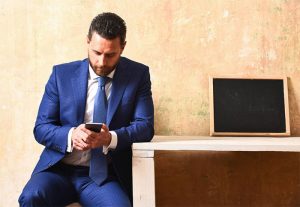One afternoon in early September, an architect jumped up on the train when he heard a woman in her 20s talking to someone on the phone, which he thought was “lively.” Architect Andrew said: “He used the word’many times’. She looks like one of those’de borgata’ girls.” Yes.
Andrew reached into his shirt pocket and pressed a button the size of a cigarette case on a black device. The latter sent a very strong radio signal, which made the transmission of the young lady’s mobile phone and all other mobile phones within a 30-meter radius invalid.
The architect admitted: “This lady spoke on the phone for more than 30 seconds before realizing that no one on the other end of the phone could listen.” When he found out that he had this power, his reaction was “Heaven What! I am finally free.”

With the proliferation of mobile phone use in public places and the inability to hear voices during conversations, a small but growing group of insurgents is seeking a more drastic solution: cell phone jammer, a type of mobile phone that enables all mobile phones to transmit signals. The equipment is completely cancelled.
Jammer technology is not new. Exporters of jammers from overseas said that the demand for jamming devices is increasing every day, sending more than 100 devices to US federal inspectors every month, which arouses interest in the telephone industry. Consumers include cafe and hair salon owners, hotels, theater operators, bus drivers, and an increasing number of commuters.
The general belief is that wireless jammers are illegal, and most countries do. The Federal Communications Commission states: “Unless you are an authorized user of the federal government, you are not allowed to use jammers in the United States (even privately owned). This means that it is illegal to use jammers on local transportation (such as trains, buses) Yes) or in houses, vehicles, schools, theaters, restaurants or other public or private locations.”